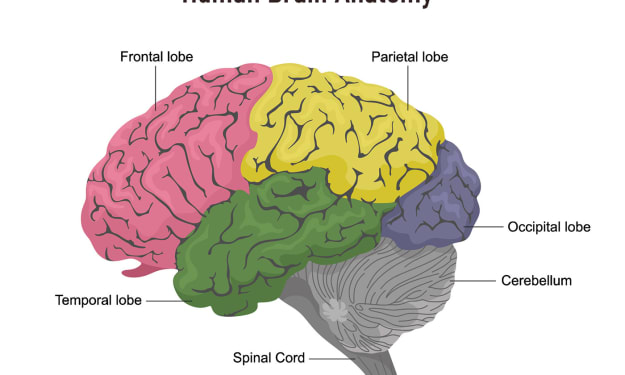Understanding Weight Loss Programs: A Comprehensive Guide
Weight Loss Series

Weight loss is a significant concern for many individuals seeking to improve their health, enhance their appearance, or address specific medical conditions. With numerous weight loss programs available, understanding the options and their effectiveness is crucial for making informed decisions. This guide explores various weight loss programs, their methodologies, benefits, and potential drawbacks.
Types of Weight Loss Programs
Weight loss programs can be broadly categorized into dietary plans, exercise regimens, behavioral therapy, and medical interventions. Each type has its unique approach and suitability depending on an individual's needs and preferences.
1. Dietary Plans
a. Low-Carb Diets:
Low-carb diets, such as the Atkins and ketogenic diets, focus on reducing carbohydrate intake while increasing fats and proteins. The primary mechanism is to shift the body's metabolism from burning carbohydrates to burning fats, a state known as ketosis. These diets can lead to rapid weight loss, but adherence can be challenging, and there may be side effects like fatigue and nutrient deficiencies.
b. Low-Fat Diets:
Low-fat diets emphasize reducing fat intake, particularly saturated fats, while encouraging the consumption of fruits, vegetables, and whole grains. The Ornish Diet and the traditional Mediterranean diet fall into this category. These diets are generally heart-healthy and sustainable long-term, but they may not lead to rapid weight loss.
c. Balanced Diets:
Balanced diets, such as Weight Watchers and the DASH diet, promote a well-rounded intake of all food groups in moderation. These diets focus on portion control and the quality of food rather than specific macronutrient restrictions. They are often considered sustainable and effective for gradual weight loss and long-term maintenance.
2. Exercise Regimens
Exercise regimens focus on increasing physical activity to burn calories and improve overall fitness. Common types include:
a. Cardio Workouts:
Cardiovascular exercises like running, cycling, and swimming increase heart rate and calorie expenditure. Regular cardio workouts are effective for weight loss and improving cardiovascular health.
b. Strength Training:
Strength training, including weightlifting and bodyweight exercises, builds muscle mass, which can increase basal metabolic rate (BMR). A higher BMR means more calories burned at rest, aiding in weight loss.
c. High-Intensity Interval Training (HIIT):
HIIT involves short bursts of intense exercise followed by brief rest periods. This type of workout can be highly effective for burning calories in a shorter time frame and improving overall fitness.
3. Behavioral Therapy
Behavioral therapy focuses on changing the habits and behaviors that contribute to weight gain. This approach often involves:
a. Cognitive Behavioral Therapy (CBT):
CBT helps individuals identify and modify negative thought patterns and behaviors related to eating and exercise. It can be particularly effective for emotional eaters and those with disordered eating patterns.
b. Mindful Eating:
Mindful eating encourages individuals to pay attention to hunger and fullness cues, eat slowly, and savor each bite. This practice can reduce overeating and improve the relationship with food.
4. Medical Interventions
For individuals with significant weight to lose or underlying health conditions, medical interventions may be necessary. These include:
a. Prescription Medications:
Certain medications, such as orlistat and phentermine, can aid weight loss by reducing appetite or fat absorption. These should be used under medical supervision due to potential side effects.
b. Bariatric Surgery:
Surgical options, such as gastric bypass and sleeve gastrectomy, are available for individuals with severe obesity. These procedures reduce stomach size and alter digestion, leading to substantial weight loss. However, they come with risks and require long-term lifestyle changes.
Evaluating Weight Loss Programs
When choosing a weight loss program, consider the following factors:
a. Sustainability:
A program should be sustainable in the long term. Quick fixes often lead to yo-yo dieting, where weight is lost and then regained.
b. Safety:
Safety is paramount. Avoid programs that promote extreme calorie restriction, eliminate entire food groups, or require excessive supplementation without medical advice.
c. Individualization:
Effective programs should be tailored to individual needs, preferences, and medical conditions. What works for one person may not work for another.
d. Support:
Support systems, whether through group meetings, online communities, or one-on-one counseling, can enhance adherence and success.
Benefits and Drawbacks
Each type of weight loss program has its benefits and drawbacks:
Dietary Plans:
Benefits: Can lead to significant weight loss, improve metabolic health, and reduce risk factors for chronic diseases.
Drawbacks: Can be restrictive, difficult to adhere to long-term, and may lead to nutrient deficiencies if not well-balanced.
Exercise Regimens:
Benefits: Improves overall fitness, cardiovascular health, and muscle strength. Can boost mental health and mood.
Drawbacks: Requires time commitment and consistency. Risk of injury if not performed correctly.
Behavioral Therapy:
Benefits: Addresses underlying psychological factors, promotes sustainable lifestyle changes, and can improve mental health.
Drawbacks: May require time and financial investment. Effectiveness depends on individual willingness to change.
Medical Interventions:
Benefits: Can lead to significant and rapid weight loss, improve obesity-related conditions, and enhance quality of life.
Drawbacks: Potential for side effects, complications, and the need for lifelong lifestyle changes. Often expensive and invasive.
Conclusion
Weight loss programs offer various pathways to achieving and maintaining a healthy weight. Understanding the different types, their methodologies, and the associated benefits and drawbacks is essential for making informed choices. Whether through dietary changes, increased physical activity, behavioral modifications, or medical interventions, the key to successful weight loss lies in choosing a program that is safe, sustainable, and tailored to individual needs. Remember, consulting healthcare professionals before starting any weight loss program is crucial to ensure it aligns with personal health goals and conditions.
About the Creator
Enjoyed the story? Support the Creator.
Subscribe for free to receive all their stories in your feed. You could also pledge your support or give them a one-off tip, letting them know you appreciate their work.





Comments
There are no comments for this story
Be the first to respond and start the conversation.